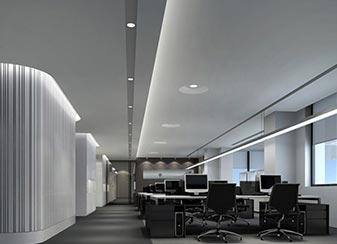
As we all know, recessed downlights are a modern and unobtrusive way to light up your home. If you like clean lines and simple lighting schemes, this simple, space-saving option is a good choice. Well-positioned recessed downlights are ideal for general ambient lighting as well as more focused work lighting.
Want to buy a built-in downlight?
Some things to consider...
Some "prep" questions:
Before addressing the number and location of downlights, please ask yourself the following questions:
How big is the room?
How high is the ceiling?
Is it a room or an open space?
How will you use the room?
Are there any areas in the room that require special attention?
Armed with this information, you can follow some simple steps:
1. How many down lights do I need?
The general consensus for choosing the number of downlights required is as follows:
Step 1 - Measure the square feet of the room by multiplying its width by its depth.
Step 2 - Multiply this square foot by 1.5. This will give you a guide to the total power required to light the space. For example, if your kitchen is 16 ft x 17 ft, the total area is 272 ft. Multiply this number by 1.5 and the total wattage illuminating the room will be 408.
Step 3 - Choose the bulb and wattage you want to use. Divide the total wattage number you calculated previously (408 in our example) by the wattage of the bulb you intend to use, which will give you the number of lamps you need.
Please note that this is a rough guide and an experienced electrician should be able to give you further guidance when completing the installation. Your lighting layout may also vary depending on your personal preferences and the tone you want to create in the room.
If your room is open plan, divide each area into "separate" Spaces for calculation. If you choose LED downlights, check the equivalent power on the package.
2. Ceiling height
Light from recessed fittings is projected down in a cone. Light cones are usually at least 30 inches from the ground. From a higher ceiling, the light will intersect at a higher level, so you don't need more down lights, just brighter wattage.
3, the spacing
Place a recessed downlight about 2 feet from the edge of the wall and place it on the ceiling as a starting point. Try to avoid creating any shadows. The downlights were then distributed evenly throughout the room to achieve a balanced look. As a rule of thumb, we recommend that you divide the ceiling height by 2 to provide the required space between each downlight. For example, if your ceiling is 8 feet high, place your lights 4 feet high. Again, this is just a guideline and you'll understand what works best in your personal space.
4, dimmer
It is always wise to choose dimmable downlights. You can then use lights to set the mood. If you have an open space, use a dimmer switch to control different areas to provide additional flexibility.
5. Task lighting
For focused task lighting, such as over a kitchen table where food is being prepared, use a downlight with a narrow beam Angle. You can mix and match beam angles for environment and task lighting.
Don't forget to select the IP grade option if you are using down lights in areas where water may come into contact.
We hope this article gives you some handy tips for locating your downlights. Also consider the shape, style and finishes of the room when making your choice, as well as whether you want cold white or warm white.
Previous: None.
Next: High efficacy LED Grow Light Board quantum boards for sale Horti-Bar LED grow light
Copyright:@2020-2021
Comments Please sign in or sign up to post.
0
0 of 500 characters used